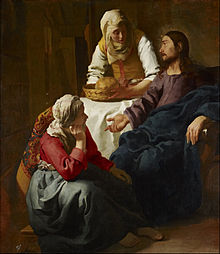
PHOTO: Mary van Balen
Finding new pots for root-bound plants isn’t easy in November. After trying convenient stores like Target, I took a drive to a garden store and found what I was looking for. Yesterday, my daughter and I repotted a plant with a history. It’s a snake plant. When she was about eight, she rescued it from me. It wasn’t a favorite. Not even sure where it came from. It sat on a shelf fastened midway up the kitchen window frame and was too tall for that place. In a rare moment of cleaning, I lifted the plant from the shelf and walked with it down the hill to our garden where I unceremoniously removed it from the pot and laid it on the earth, figuring it would be good compost for the next year’s crop.
My young daughter did not approve. “Mom!! You’re KILLING that plant,” she said. No amount of recounting the cycle of nature, of things returning to earth to nourish what comes next could convince her. She stood her ground, looking accusingly into my eyes. “No, YOU ARE KILLING THAT PLANT.”
Exasperated, I gave in, sort of. “If you want it, you repot it.” She wouldn’t bother I thought.
Wrong. She brought it to me in the same pot and poor soil, and it went back on the shelf. That year it flowered for the first time, positively dripping nectar. For two years it did that. In my face. I was chastened, and it has moved with me or one of my daughters ever since.
Yesterday, its savior helped me place it in a lager pot. This plant is huge with some leaves four feet tall. It’s become company for me in my office, and I’ve become fond of it. As I was running in and out of the house for potting soil, florist’s tape, and scissors, I called out to my daughter…
“Talk to it, honey. Lay your hands on it. Hold it steady. It trusts you.” She did and carried it back inside.
Today, after buying three new pots, more soil, and a little trellis for a plant that would just as soon climb as spread out all over the buffet, I prepared the counter in the kitchen and put on a little Bach. Couldn’t hurt, I thought. The three chosen plants were ready to break their old containers with roots so thick and entwined that they easily slid out of the pots. I spoke softly, patted, watered, and placed them in clean saucers on the buffet. Root room at last.

PHOTO:Mary van Balen
I cleaned the kitchen and then, for a while, just sat and looked at them. Lovely. Dark soil. Clean clay pots. Room to grow. I thought I should probably do something. Like read for the course I’m taking or visit a great niece who’s spending a few days with her grandparents. Or straighten up the dining room table. But I didn’t want to move. Bach was sounding good. I chose root room over busy, breathing deep and letting thoughts and “shoulds” untangle, like I imagined the roots were beginning to do in their new pots. So, there we sat, the plants and I, listening to Cantata #208 and relishing a little space.











 Originally published in The Catholic Times, Oct. 13 Vol. 64:2
Originally published in The Catholic Times, Oct. 13 Vol. 64:2
 His homily at Sunday’s opening mass warned of the possibility that those charged with nurturing God’s people can bring harm instead out of their self interest, greed, and pride: “God’s dream always clashes with the hypocrisy of some of his servants. We can ‘thwart’ God’s dream if we fail to let ourselves be guided by the Holy Spirit,” Pope Francis said. “The Spirit gives us that wisdom which surpasses knowledge, and enables us to work generously with authentic freedom and humble creativity.”
His homily at Sunday’s opening mass warned of the possibility that those charged with nurturing God’s people can bring harm instead out of their self interest, greed, and pride: “God’s dream always clashes with the hypocrisy of some of his servants. We can ‘thwart’ God’s dream if we fail to let ourselves be guided by the Holy Spirit,” Pope Francis said. “The Spirit gives us that wisdom which surpasses knowledge, and enables us to work generously with authentic freedom and humble creativity.”













 Journaling has long been a way of prayer for me. Writing can help me be present to the moment, aware of Grace in ordinary experiences. It also helps me reflect on life as it unfolds. Sometimes it’s a book or movie that touches my spirit. Sometimes a passage from Scripture or a photo, or a conversation. It might be current events or listening to YoYo Ma.
Journaling has long been a way of prayer for me. Writing can help me be present to the moment, aware of Grace in ordinary experiences. It also helps me reflect on life as it unfolds. Sometimes it’s a book or movie that touches my spirit. Sometimes a passage from Scripture or a photo, or a conversation. It might be current events or listening to YoYo Ma.